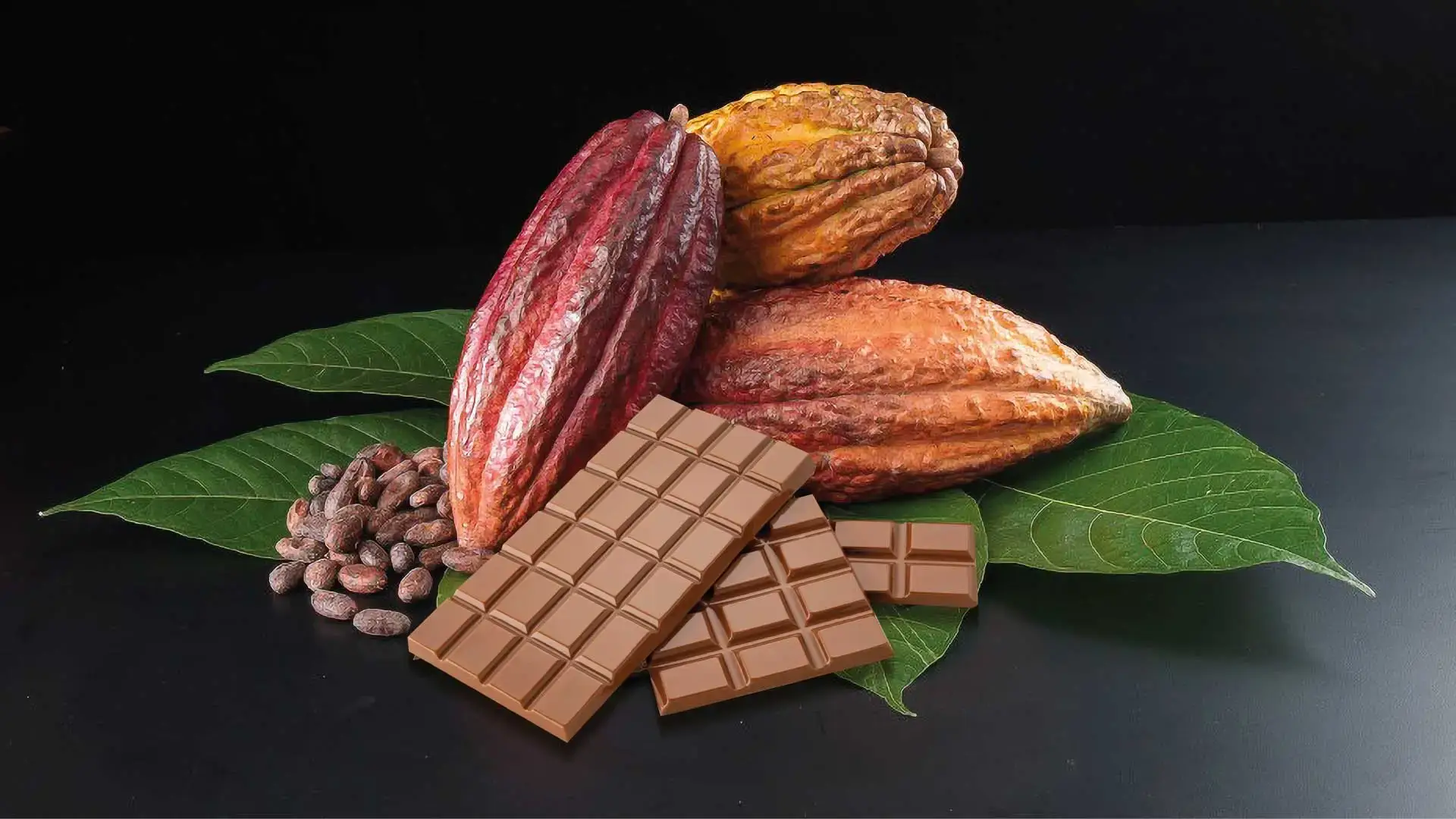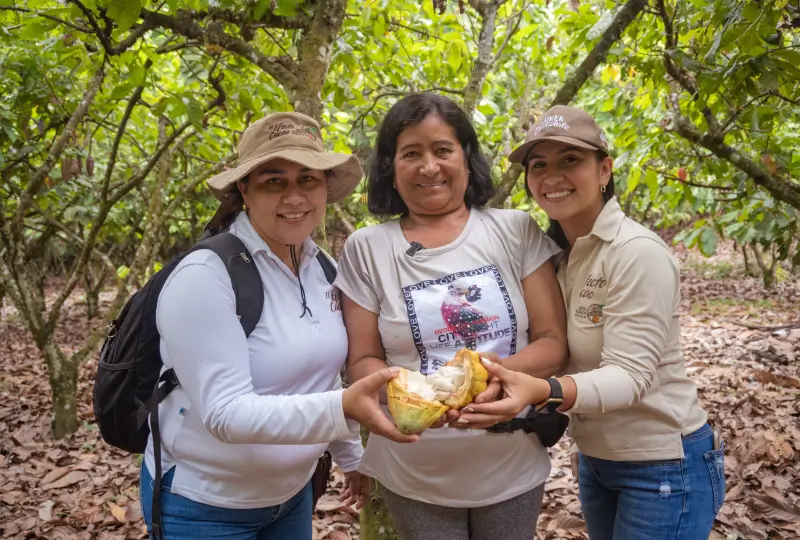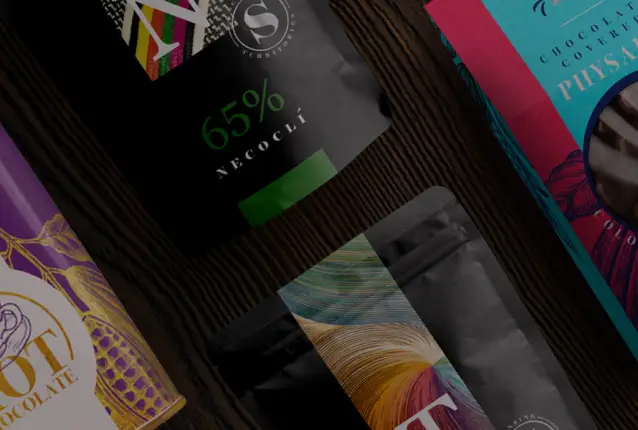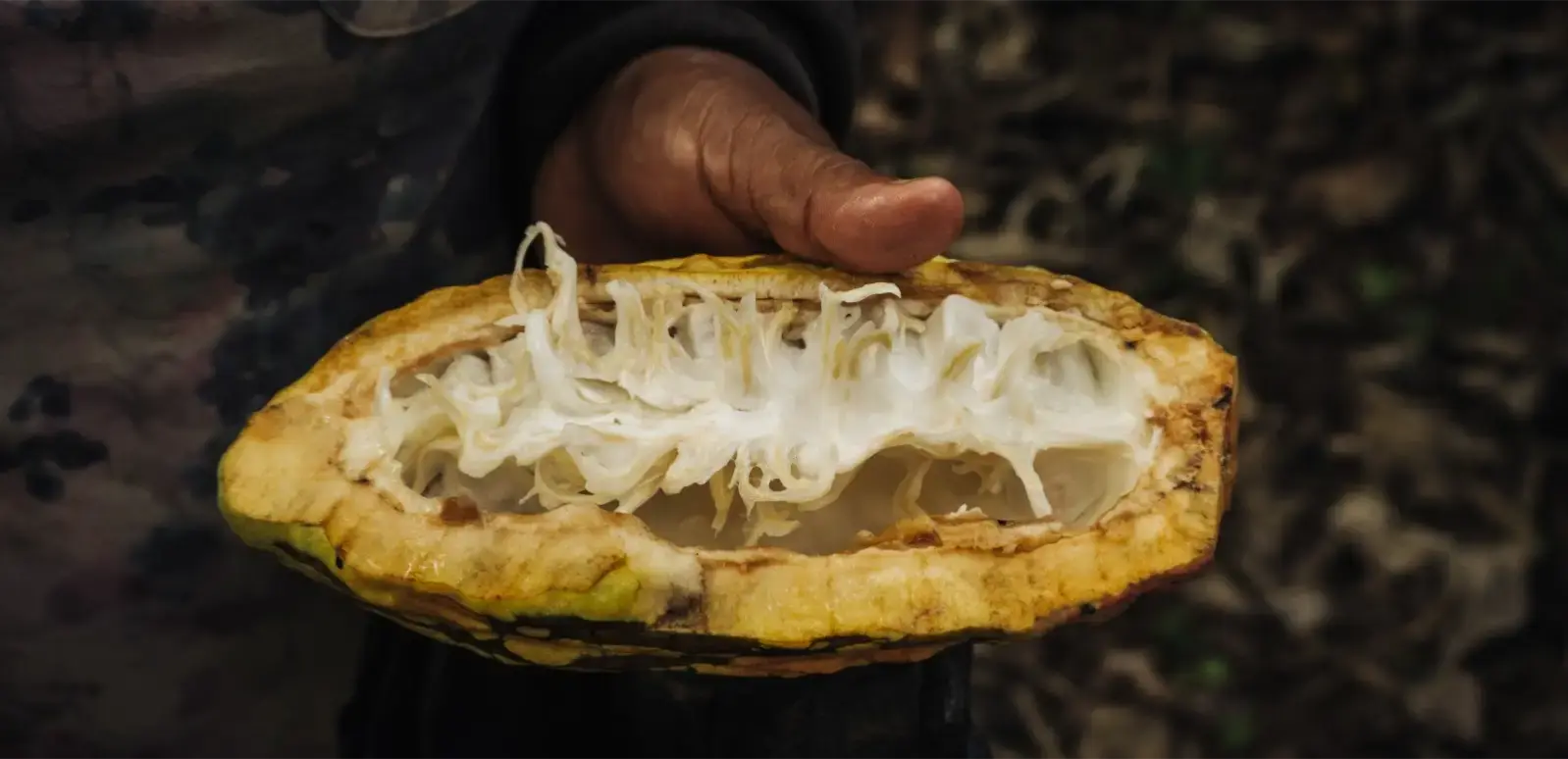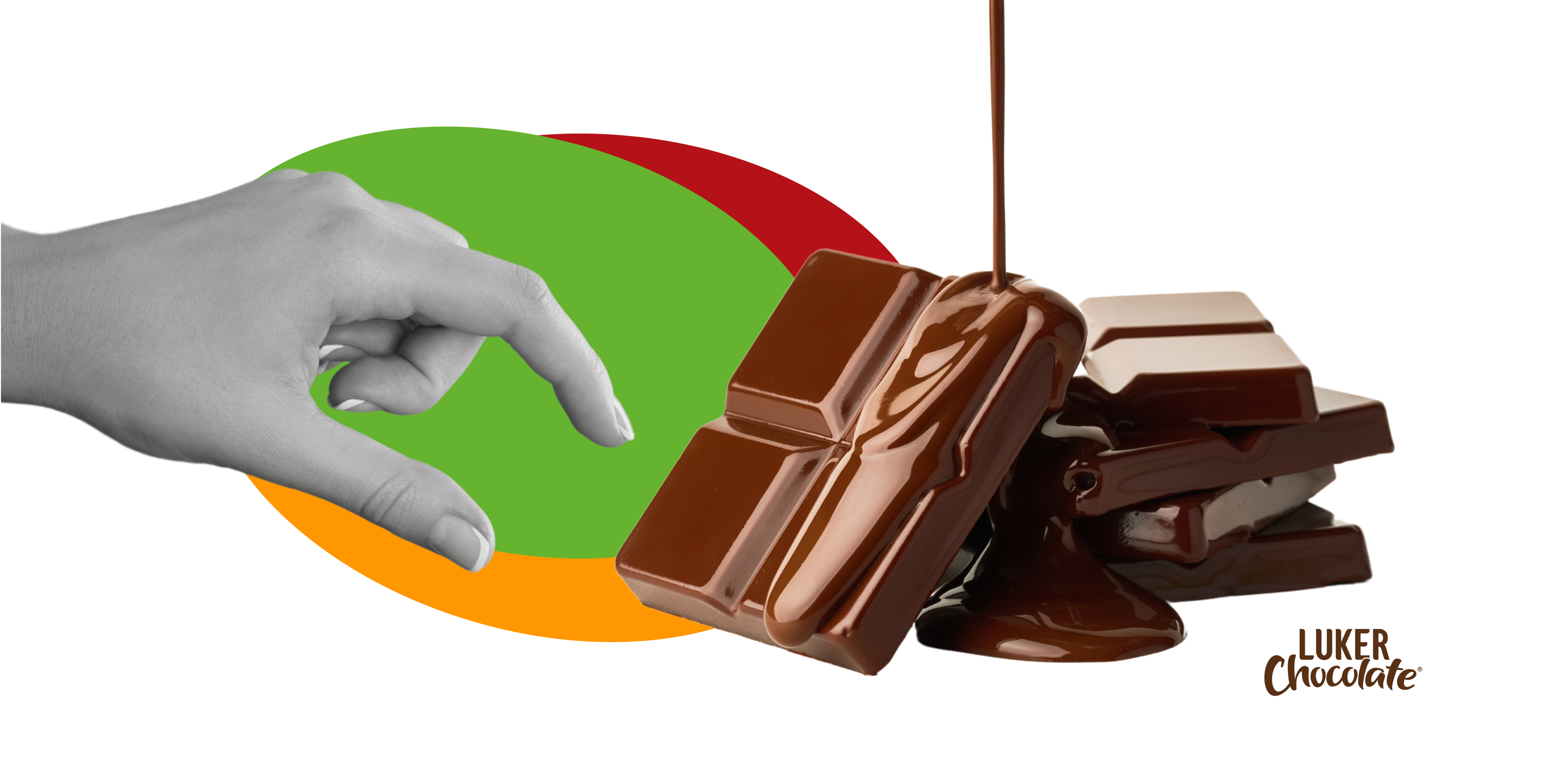Organic chocolate is a strategic advantage. As consumers increasingly demand natural, clean-label, and plant-based products, chocolate brands that respond with certified organic offerings are better positioned to grow, differentiate, and earn trust. Whether you're launching new products or refining your sourcing strategy, understanding the organic chocolate market is essential.
In this article, we’ll break down what’s behind the surge in demand, what it means for your business, how to approach organic certifications, and which chocolate applications offer the greatest opportunity.
🧭 Table of Contents
- What’s Driving Demand for Organic Chocolate?
- How Consumer Values Shape Buying Decisions
- What Challenger Brands Can Do
- Organic Chocolate Applications & Formats That Sell
- Learn More About Sustainable Sourcing Practices
1. What is Driving the Demand for Organic Chocolate?
The global chocolate market is shifting—and consumers are leading the charge. Today’s chocolate lovers are more informed, value-driven, and health-conscious than ever before. They're not just looking for indulgence; they’re seeking chocolate that aligns with clean-label, sustainable, and better-for-you values.

🔍 Key Drivers Behind the Shift
- Health & Wellness Culture: Consumers are actively reducing their intake of artificial ingredients, refined sugars, and preservatives. Organic chocolate, made with non-GMO, plant-based, and minimally processed ingredients, fits into this better-for-you narrative (Innova Market Insights, 2025).
- Clean Label Expectations: Transparency is key. 7 in 10 consumers globally say they regularly read ingredient labels and want short, recognisable ingredient lists (Innova, 2024). Organic labels give them instant reassurance.
- Sustainability & Ethical Sourcing: The modern consumer expects more than taste—they want fair trade, climate-friendly, and traceable chocolate. Organic farming practices reduce environmental impact, eliminate harmful chemicals, and support biodiversity.
- Plant-Based Momentum: Vegan, dairy-free and plant-based chocolate is no longer niche. Organic aligns naturally with this trend, especially when combined with ingredients like oat milk, coconut sugar, and cacao from direct trade sources.
- Price Tolerance for Purpose: 78% of consumers are willing to pay more for chocolate made with naturally sourced ingredients (Innova, 2024), especially when it delivers on both indulgence and values.
2. How Organic Trends Shape Chocolate Consumer Behaviour
Organic chocolate is no longer a niche indulgence—it’s a mainstream expectation. Understanding how this trend influences consumer behaviour can help brands craft products that meet market needs while staying ahead of evolving preferences.

👥 What Today’s Consumers Want
- Transparency & Trust: Today’s chocolate consumers expect traceability. They want to know where their chocolate comes from, how the cacao is grown, and whether it supports people and planet. Certifications like USDA Organic, EU Organic, and direct trade partnerships provide credibility (Voice of the Consumer – Sustainability Survey, 2024).
- Multi-Sensory Experience: While organic credentials are key, taste still reigns supreme. Consumers want chocolates that look, feel, and taste indulgent, without compromising on their clean-label values. Texture and format matter, especially in snacks like chocolate-covered fruits or bars with inclusions (Luker Chocolate, 2025).
- Healthier Indulgence: Increasingly, shoppers are treating chocolate as part of their wellness journey. “No added sugar,” plant-based, and functional benefits (like protein or adaptogens) are trending—especially when combined with organic ingredients (Innova, 2025; Mintel, 2024).
- Sustainability as a Purchase Driver: A third of chocolate consumers are willing to switch brands for one with stronger environmental credentials (Voice of the Consumer – Sustainability Survey, 2024). Organic aligns closely with this expectation, particularly when combined with regenerative agriculture, no deforestation, and transparent sourcing stories.
“Organic chocolate is no longer just about what’s not in it—it’s about what it adds to the consumer experience: trust, flavour, and a sense of doing good.”
✅ Discover how to deliver on clean-label and free-from consumer demands
3. What Brands Should Do to Stay Competitive in the Organic Chocolate Market
For challenger brands, whether you produce in-house or work with a partner, staying ahead means being both responsive to consumer demand and strategic in execution. Here's how to navigate the organic chocolate opportunity:
1.Align With Clean-Label and Plant-Based ExpectationsConsumers increasingly associate “organic” with natural, healthy, and plant-based attributes. In fact, 78% of global shoppers are willing to pay more for products made with naturally sourced ingredients (Innova Market Insights, 2024).
🛠️ Action for brands:
- Choose formulations free from synthetic additives and unnecessary processing.
- Offer clarity around ingredients with short, recognisable labels.
- Combine organic certification with “no added sugar”, vegan-friendly, and non-GMO claims when possible.
➡️ Discover our organic couvertures, crafted with plant-based and clean-label demands in mind.
2. Prioritise Transparency and Ethical SourcingIn a world of greenwashing, proof matters. That’s why third-party certifications and visible sourcing practices are key. Luker’s organic chocolate offer includes cacao sourced through our direct trade model, supported by Luker Trace, our traceability platform.
| 📌 Tip: Make traceability part of your storytelling. Use QR codes, origin maps, or digital experiences to showcase sourcing practices and farmer impact. |
🔗 Read how Luker Trace strengthens sustainable sourcing and compliance.

The path from concept to shelf can be complex when launching an organic chocolate product. If you don’t manufacture in-house, you need a partner that understands:
- Organic ingredient management
- Cross-contamination prevention
- Clean-label formulation constraints
- Shorter, trend-responsive time-to-market
|
🔍 Look for a partner with: - Certified organic manufacturing facilities - Experience in scalable NPD - Packaging and logistics capabilities tailored for natural product launches |
4. Organic Chocolate Applications & Formats That Sell
As consumer demand for organic, clean-label, and plant-based products grows, so does the opportunity to diversify product offerings across categories. Whether your goal is to expand a premium line or introduce better-for-you snacking options, organic chocolate can be used in multiple, high-demand applications.
Here are some of the top-performing formats where organic chocolate is making a strong impact:
🍫 Bars & Bars with Inclusions
Classic and endlessly customisable, chocolate bars remain a core product in the organic category. Including natural inclusions like nuts, seeds, freeze-dried fruits, or spices allows brands to create unique flavour and texture combinations that resonate with today’s adventurous, health-conscious consumers.
76% of consumers say they actively seek indulgent experiences with added texture and natural ingredients (Innova Market Insights, 2024).
🍬 Dragees, Chips, and Chunks
These formats are thriving in both snackable and ingredient applications. Brands are leveraging organic chocolate chunks and chips in:
- Better-for-you baking mixes
- Snack pouches
- Nut butter cups
- Breakfast and granola formulations

Organic chocolate chips and chunks provide functional versatility for brands aiming to scale while maintaining natural claims.
🥜 Nut Butter Cups & Filled Formats
The demand for peanut butter cups, almond butter centres, and filled bites is growing, particularly in North America and Europe, where functional snacking is on the rise.
- Pairing organic chocolate with plant-based fillings allows for more indulgent yet health-forward options.
- Formulating with coconut sugar, date paste, or fruit purées meets the clean-label standard consumers expect.
🍓 Covered Fruits and Superfoods
Dried fruit, seeds, and even functional superfoods like ginger or goji berries are being enrobed in organic chocolate for an elevated snack experience. These formats serve both the wellness and premium gifting markets.

| 📌 Tip: Position these products around multi-sensory indulgence—texture and flavour innovation is a key purchasing driver (Snacks and Confectionery Chocolate Trends, 2025). |
5. Organic and Sustainable by Design: Luker’s Approach
In today’s market, organic alone is not enough. Consumers expect organic chocolate to also align with broader sustainability values, including ethical sourcing, environmental responsibility, and social impact.
|
At Luker Chocolate, we see these demands not as challenges—but as opportunities to build stronger, more meaningful products and partnerships. 🌱 A Regenerative and Transparent Sourcing Model All our organic couvertures are made with fine flavour cocoa beans sourced through direct trade relationships with cocoa-growing communities across Colombia. Our model is rooted in transparency, traceability, and long-term farmer partnerships. Through our Luker Trace platform, we provide full visibility into the cocoa journey—from GPS-mapped farms to post-harvest practices and sustainable transport. This level of traceability is increasingly critical, particularly in the context of upcoming regulations like the EU Deforestation Regulation (EUDR). 📊 “1 in 3 consumers is willing to pay more for chocolate with verified sustainability claims.” (Innova Market Insights, 2024) 🌍 Regenerative Cocoa at Scale Beyond compliance, we invest in regenerative agriculture, working with cocoa farmers to improve soil health, increase biodiversity, and restore degraded land. For example:
♻️ Clean Labels. Cleaner Futures. All our organic chocolates are designed to support:
Whether you're developing functional snacks, low-sugar indulgence, or premium bars, our team works with you to match flavour, functionality, and impact. |
Whether driven by clean label preferences, plant-based lifestyles, or transparency in sourcing, organic claims are becoming central to purchase decisions across confectionery, snacking, and beyond.
For challenger brands, this presents an opportunity to respond with relevance. By staying informed about market behaviour, evolving certification requirements, and the diverse applications of organic chocolate, brands can make smarter, faster decisions that meet consumer expectations—without compromising flavour or innovation.
Meeting this moment doesn’t mean starting from scratch. It means aligning your next product with what today’s consumers are already looking for.
| • Learn more about organic chocolate certifications by geography (coming soon) • See how industry trends are shaping chocolate innovation in 2025 • Explore applications of organic chocolate across formats like snacks, bars, and inclusions |
